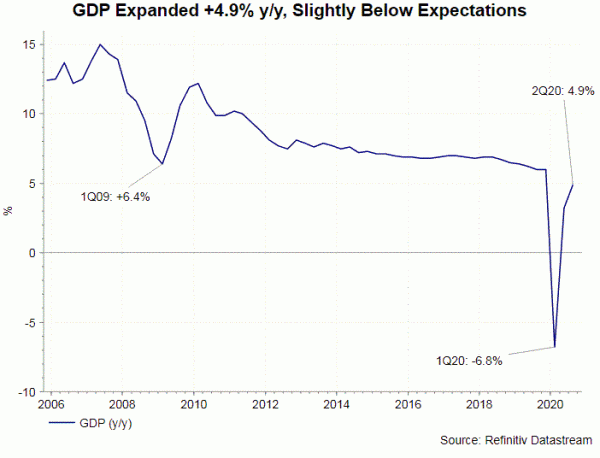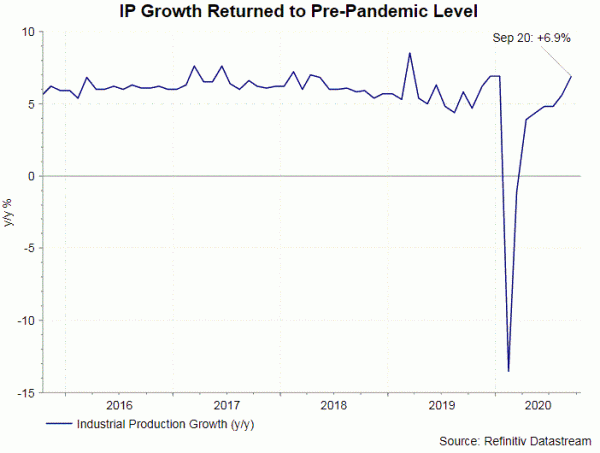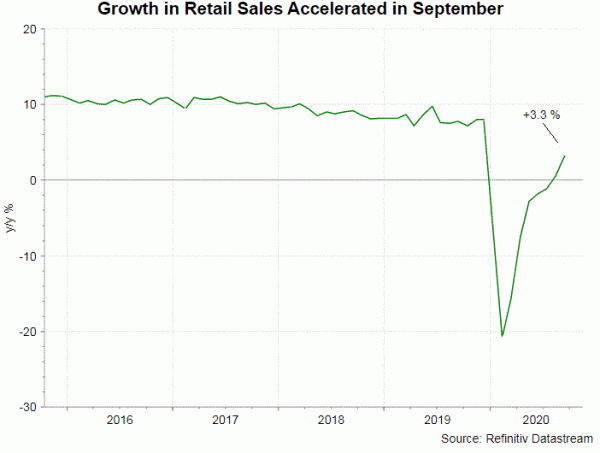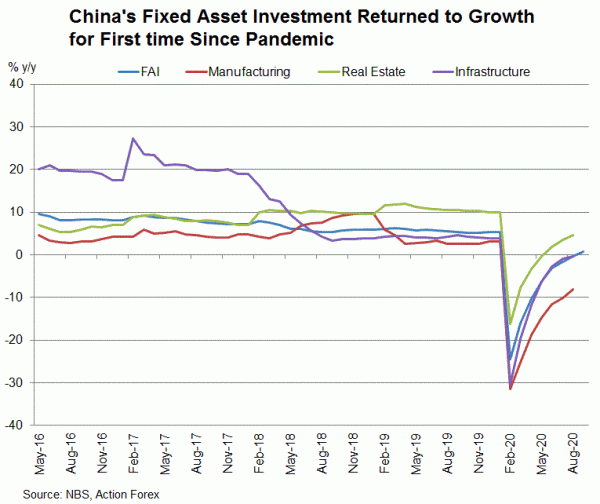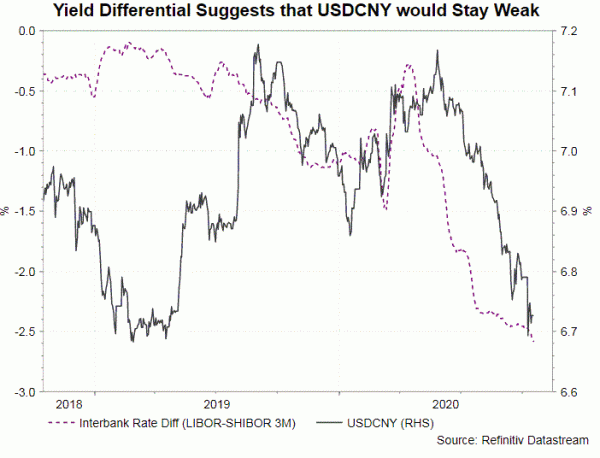The latest set of China’s macroeconomic data is mixed in the headline. GDP growth in the third quarter came in below market expectation. However, major indicators such as industrial production, retail sales and fixed asset investment all beat consensus, confirming recovery is underway. Against this backdrop, we expect PBOC to maintain its policy rates and RRR for the rest of the year. This could maintain a China/US yield differential that supports renminbi (a.k.a. RMB, CNY) against US dollar.
GDP expanded +4.9% y/y in 3Q20, compared with consensus of +5.5% and +3.2% in the second quarter. Industrial production (IP) growth accelerated to +6.9% y/y in September from +5.6% in the prior month. This has beaten consensus of +5.8%. Tech-related industries contributed to most of the growth. Industrial robots soared +51.4% y/y while integrated circuits gained +16.4%y/y.
Retail sales expanded further, by +3.3% y/y in September, following a mild growth a month ago. This has more than doubled market expectations, furthering signaling that domestic demand has been improving. One reason for the improvement can be government’s promotion of cross-provincial travel which led to spending on tourism services as well as other consumer discretionary.
Urban fixed asset investment climbed +0.8% in the first 9 months of the year, following months of contraction. For September alone, FAI grew +7.5% y/y, moderating from +8.1% in August. Real estate investment, soaring +5.6% y/t in the first 9 months, continued to accelerate. After returning to the expansionary territory in June, real estate investment growth has been accelerating every month. While real estate investment has been providing substantial contribution to economic growth, this has also raised concerns of demand/supply imbalance as investors might remain cautious in light of uncertainty about the development of the pandemic. They might be reluctant to participate in illiquid investments at the current market situation.
The major implication on the monetary policy is that PBOC would maintain the current prudent and targeted stance. We expect the policy rates and RRR will stay unchanged for the rest of the year. This will sustain the policy divergence with the Federal Reserve, which moved to a more dovish average inflation targeting in September. Together with the ongoing fiscal stimulus deadlock at least until after presidential election, yield differential between CNY and USD could widen, supporting CNY’s strength against USD.




